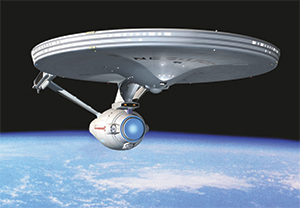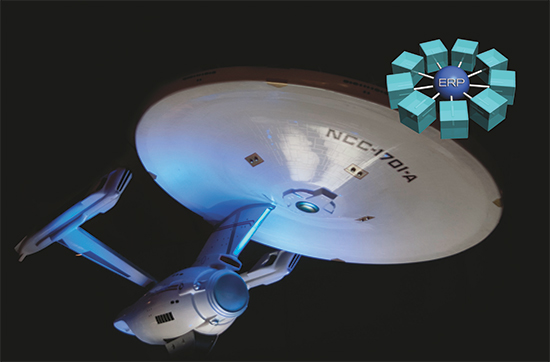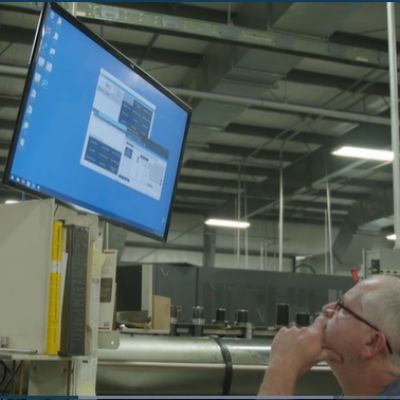 The “basics” of ERP used to be defined by basic functionality required by all types of companies. Basics usually referred to core modules of ERP: general ledger, accounts and receivable, order management, purchasing and inventory control. For manufacturers it also included MRP and the basic requirements for scheduling, creating and managing production orders. Those modules remain important today, but the basics now include advanced-technology modules including work flow, event management (triggers and alerts), process modeling and enterprise portals. Older legacy solutions may not even include these advanced options in their portfolios.
The “basics” of ERP used to be defined by basic functionality required by all types of companies. Basics usually referred to core modules of ERP: general ledger, accounts and receivable, order management, purchasing and inventory control. For manufacturers it also included MRP and the basic requirements for scheduling, creating and managing production orders. Those modules remain important today, but the basics now include advanced-technology modules including work flow, event management (triggers and alerts), process modeling and enterprise portals. Older legacy solutions may not even include these advanced options in their portfolios.
What else should manufacturers look for? Without fully understanding the technology platform on which next-generation ERP solutions are built, it may be difficult to recognize available features. Here are a few hints to listen for as vendors describe their offerings:
• Service-oriented architecture
• Object-oriented data models
• Event-driven or message-based technology
• Semantic layers
• Mobility
• Rules engines
• In-memory databases
• HTML5 and XML
All of these next-generation ERP features represent new ways of engaging with ERP, ease of configuration versus customization, improved integration capabilities and new s to deliver innovation.
New Ways to Engage With ERP
Users traditionally have engaged with ERP through a hierarchical series of menus, which require at least a rudimentary knowledge of data and process organization. Hopefully this organization reflects how the company and its business processes are structured. But, with a hierarchy of menus, there are no guarantees and so there also are no guarantees that navigation will be intuitive or that business processes will be streamlined and efficient.
Next-generation ERP attacks this very real problem by making the user interface more intuitive and personalized, much like the user interfaces found on mobile device. We call this the “consumerization” of IT, and the trend includes web-based access, making ERP accessible anywhere, anytime through mobile devices. Touch technology is making its into the hands of ERP users. Look for this to become more pervasive and for more devices to be natively supported.
New s of engaging with ERP have put ease of use atop the leader board in terms of selection criteria. This is much more than just an intuitive user interface or how an accounts-payable clerk or a material handler interacts with ERP. Now business executives can readily put tabs on the pulse of the company through a select number of key performance indicators (KPIs). Next-generation ERP solutions can present custom graphical view of KPIs and also allow an executive to drill down to successive levels of detail. These customized views combine ERP with other tools such as e-mail and Microsoft Office, and can even offer chat functions allowing the user to record instant messages. And, they will be available on a myriad of devices.
Customization vs. Configuration and Tailoring
Different roles in the organization require different views, and different individuals also may require unique views. And what organization today doesn’t think it isn’t unique in some? With traditional ERP based on older technology, providing a variety of views mean customization. Developers were forced to muck around in source code, which built barriers to moving forward with updates and upgrades. This made business applications like ERP rigid and inflexible. Sure, there were als some configuration options, but those options were constrained by the logic embedded in the source code.
Next-generation ERP is built in layers, removed from the source code. First and foremost is the user-interface layer, which because it is separate can easily be tailored to what a user wants to see and how he sees it, without ever touching the underlying code. And, configuration (versus customization) does not require deep technical skills and carries forward as the provider enhances the software.
In addition, there might also be a set of business rules created and maintained. These rules might be used to determine behavior of a function or to configure the next steps in a workflow. Business rules might define different thresholds for approval (e.g. all purchase orders require approval but those over a certain value require an extra step in the approval process). These business rules also might be used to trigger alerts, notifying managers when events occur (e.g. a big order comes in) or when they fail to occur (a scheduled delivery date is missed).
With a next generation ERP, most perceived customization is really configuration.
Integration and Innovation
We include integration capabilities and news of delivering innovation as a single topic here because the technology used to deliver both likely will be similar, if not identical. In this context, you will hear two terms bandied about: services and objects, both of which can be shared. We also should note a third term: components.
Software vendors originally developed ERP as a tightly integrated set of modules with only one of everything, including master files and maintenance functions. Even though order-management and accounts-receivable modules both needed a customer master, they shared a single master file. Likewise, purchasing and accounts payable shared a supplier master file; and purchasing, shop-floor control, engineering and inventory management shared a common part master file.
Not only do all ERP modules share a common database, but all are developed using the same tools and technology and they all move forward in lockstep. This eliminates data redundancy and any need for separate integration efforts. But it also means purchasing can’t move forward until order management, shop-floor control and inventory management modules are ready to move. It takes massive efforts of coordination by the vendor to ensure all of the pieces of the puzzle progress together. And, it takes similarly massive coordination efforts by all departments within a customer’s organization to take those next steps altogether.
But what if a supplier or customer demands that your company change the you conduct business, and your current ERP solution can’t support that change? Maybe you need to upgrade, enhance or even swap out the purchasing or order-management module for a new solution. This would be made simpler if the purchasing or order-management modules were separate applications—although that would most likely require additional effort and cost for integration.
What if, instead, you could take that tightly integrated ERP purchasing module and loosely couple it? That , if you wanted to replace it you would just have to uncouple it and swap in a new one. Of course it’s a little more complicated than that, but that’s the general idea.
A Basic Necessity
As the basics of ERP become more of a commodity, it becomes that much more of a basic necessity of business, including advanced technology that provides manufacturers easier access and configuration without customization, better integration and more innovation. And as those basics become commoditized, ERP might appear to slip into the background. While all companies have common needs, specific industries create specialized needs and it also becomes increasingly important for companies to seek competitive differentiation. However, core functionality is not where this source of differentiation lies, but rather in the services and functions that surround the core.
So let’s continue our Star Trek/solar-system analogy and imagine ERP as the sun, in the center of a company’s infrastructure. Circling the sun are planets drawing sustenance in the form of light and heat, which makes them habitable. Gravity holds the planets in orbit.
Now equate habitable to an ERP system’s easy access and intuitive user interfaces that can be configured and personalized. With ERP at the center of a software solar system, gravity is drawn from the platform on which the ERP is built. Building ERP and all of the surrounding applications on a common platform and standardized business objects will ensure a strong connection but with a loose coupling that can easily be disconnected and reconnected.
Key Takeas
Next-generation ERP is a far cry from traditional ERP solutions of the past. New technology platforms allow users to engage with ERP in new and different s with intuitive and visually appealing user interfaces, which do not rely on intimate knowledge of how the system or the data is structured.
Next-generation solutions are more easily custom configured, eliminating invasive customization that prevents companies from moving forward with updates and upgrades. This is particularly important as the pace of innovation accelerates, supported by the use of web-based services, object-oriented data models and component architecture.
If your current ERP solution has you stuck in the 20th century, look for a solution that can satisfy all of your basic, generic needs quietly in the background, and that is built on a next-generation architecture that supports rapid development and innovation, and rock-solid but easy integration. MFView Glossary of Metalforming Terms
Technologies: Management







 Like the USS Enterprise, whose 5-yr. mission was to explore new worlds and “to boldly go where no man has gone before,” early versions of enterprise-resource-planning (ERP) software charted new territory for enterprise applications. It evolved from MRP (material requirements planning) to MRP II (manufacturing resource planning) and then boldly set out to conquer the “final frontier” of ERP: managing not a small piece of the enterprise but the enterprise itself. And like the Star Trek franchise, after playing on both large and small screens for more than two decades, a “next generation” of ERP has been born: faster, more technologically enabled and more in tune with the evolving needs of the galaxy.
Like the USS Enterprise, whose 5-yr. mission was to explore new worlds and “to boldly go where no man has gone before,” early versions of enterprise-resource-planning (ERP) software charted new territory for enterprise applications. It evolved from MRP (material requirements planning) to MRP II (manufacturing resource planning) and then boldly set out to conquer the “final frontier” of ERP: managing not a small piece of the enterprise but the enterprise itself. And like the Star Trek franchise, after playing on both large and small screens for more than two decades, a “next generation” of ERP has been born: faster, more technologically enabled and more in tune with the evolving needs of the galaxy. 
